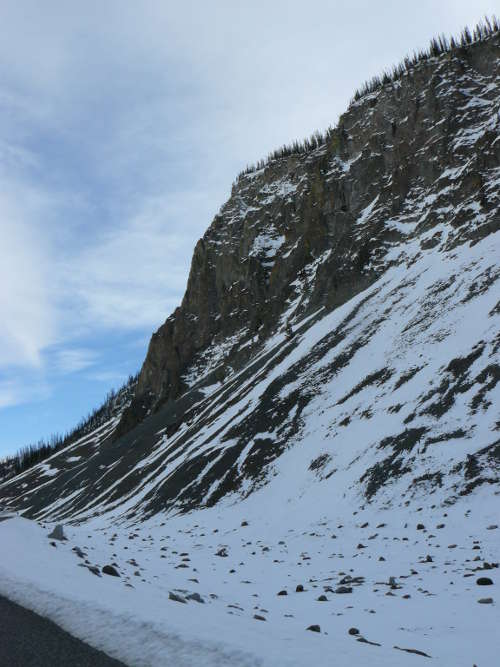 Location Taken: Near the East Entrance of Yellowstone National Park, Wyoming
Location Taken: Near the East Entrance of Yellowstone National Park, Wyoming
Time Taken: October 2012
I’ve been across several high mountain passes, and every one seems special somehow.
Sometimes it’s because it’s a natural valley, usually with steep sides and large debris fields, like this one. That’s when the pass is noticeably deeper than the mountain range it goes through, a coincidence of valleys and canyons creating a low spot. Other times the pass goes over the top of the range, and a large area of thin-growing grass and odd tumbles of rocks surrounds the peak. If you’re high enough, snow lasts into the summer months, and the area is filled with alpine meadows.
Mainly, though, it’s the water that’s different.
Mountain passes are dividing lines between watersheds. Half the water goes one way, half the other. All the streams are tiny, and there’s a multitude of them, each coming from a shady divot in the ground where the snow can accumulate better.
And as you descend the mountain, the small streams join up, getting wider and deeper and stronger, and you watch a river grow. Mind you, that’s because we have a very strong tendency to put passes in valleys, since they’re low spots, and valleys are created by rivers and streams. The largest valleys tend to have (or had in the past, or perhaps have only when the spring thaw hits) the largest rivers.
It’s watching a stream grow from melting snow to a full raging river that makes descending such passes so special sometimes. Other times it’s just touching a high point, where the earth meets the sky, where the rules are a bit different, that far above the sea. And of course, you can’t discount the psychological factor of knowing this place has a special name, a special role to play, that indicates a history of humans choosing that spot to travel through. That’s what the name means, after all. A Mountain Pass is where you pass through the mountains, no more, no less.
